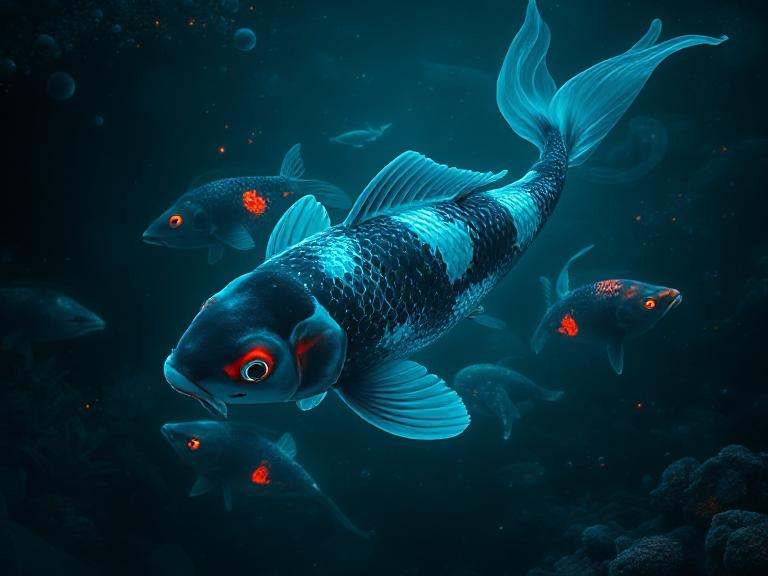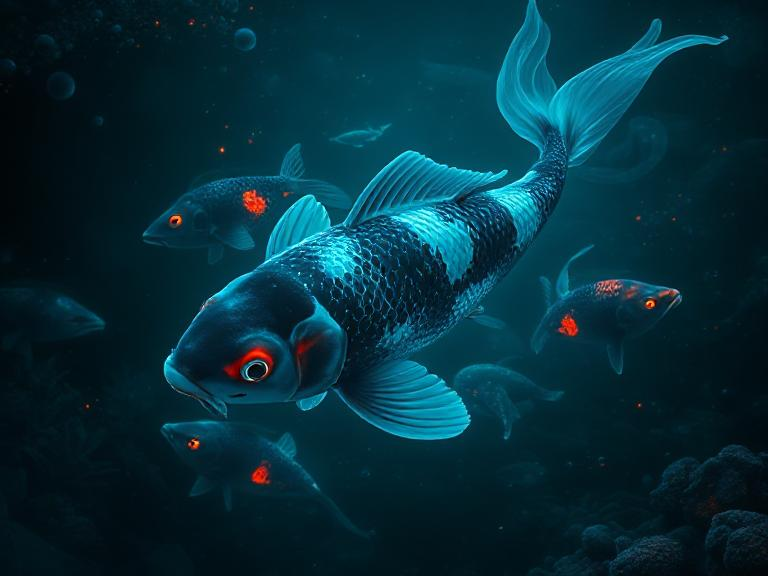
Koi fish, often associated with Japanese culture, are one of the most beautiful and popular ornamental fish species in the world. With their vibrant colors, large size, and graceful swimming patterns, they have captured the hearts of fish enthusiasts and collectors. This article will explore the fascinating world of koi, their history, care requirements, and why they are so highly regarded.
History and Cultural Significance
Koi, also known as Nishikigoi in Japanese, are ornamental carp that were originally bred for food. They originated in the early 19th century in Japan, where farmers began selectively breeding them for their bright colors and patterns. The fish were originally bred in the Niigata region of Japan, and their distinctive hues became a symbol of status and luxury.
In Japanese culture, koi are seen as symbols of perseverance and strength. The koi’s ability to swim upstream and its association with the Chinese myth of the “koi that turned into a dragon” represents the virtues of determination, ambition, and transformation. As a result, koi are often kept in ponds for decorative purposes and are believed to bring good luck and prosperity to their owners.
Characteristics of Koi
Koi are known for their stunning variety of colors, which include red, orange, yellow, black, and white, as well as intricate patterns. These colors and patterns are important in distinguishing different types of koi, such as the Kohaku (white with red markings), Sanke (white with red and black markings), and Showa (black with red and white markings). The more vivid and unique the color and pattern, the more valuable the koi fish is considered.
These fish can grow to impressive sizes, often reaching lengths of 2-3 feet, with some individuals even exceeding 4 feet. Their longevity is another reason for their popularity; koi can live for many decades, with some specimens living to be over 50 years old.
Koi Care and Maintenance
Proper care and maintenance are essential for keeping koi healthy and vibrant. A well-maintained pond or tank with clean water and proper filtration is crucial for their well-being. Koi are cold-water fish, so they can thrive in water temperatures ranging from 59°F to 77°F (15°C to 25°C), though extreme temperature fluctuations should be avoided.
Koi are omnivores, and their diet includes specially formulated koi food, along with occasional treats like vegetables and insects. Regular feeding helps promote their growth, but it’s important to avoid overfeeding, as this can lead to water pollution and health issues for the fish.
To keep koi healthy, it is important to monitor their water quality regularly. A good filtration system, regular water changes, and testing for parameters like pH, ammonia, and nitrate levels are essential. Additionally, koi ponds should be free from predators such as birds and larger animals that may pose a threat to the fish.
Koi as a Symbol of Tranquility
In addition to their aesthetic appeal, koi are often associated with tranquility and peace. Many koi ponds are designed to create a calming, meditative environment, where people can relax and enjoy the beauty of the fish. The gentle movement of koi swimming through the water has a soothing effect on the mind, making them an ideal addition to any garden or outdoor space.
Koi are more than just decorative fish; they are a symbol of grace, perseverance, and beauty. Whether kept for their cultural significance, their visual appeal, or simply as a source of relaxation, koi continue to be cherished by people around the world.

